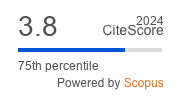Article | Open Access
Reinterpreting Existenzminimum in Contemporary Affordable Housing Solutions
| Views: | 5615 | | | Downloads: | 3508 |
Abstract: During the housing crisis of the 1920s, the German concept Existenzminimum (minimum dwelling) was developed and applied to the construction of public social housing. It was considered a design laboratory, where research, design, and experimentation would focus on a unique goal: create a space-efficient affordable housing typology, based on minimum quality standards. Empirical evidence indicates a renewed interest in alternative design solutions and minimum dwelling approaches over the last decade: examples include micro-housing solutions and collaborative housing models. This is due to the current affordable crisis and the increasing trend of urbanisation. However, little is known about the current interpretation of Existenzminimum. What does the concept entail today and how has it developed? This article investigates if and how Existenzminimum is currently applied: first, it unfolds the core design principles of the original Existenzminimum. Then, these principles are used to assess if and how existing affordable or low-cost housing approaches are current (re)interpretations of the concept. Finally, the article proposes a definition for a contemporary Existenzminimum, arguing that a better understanding and awareness of the concept can help urban planners, designers, policy-makers and citizens in developing alternative affordable housing solutions.
Keywords: affordable housing; alternative design solutions; Existenzminimum; housing typology; minimum dwelling
Supplementary Files:
Published:
© Sara Brysch. This is an open access article distributed under the terms of the Creative Commons Attribution 4.0 license (http://creativecommons.org/licenses/by/4.0), which permits any use, distribution, and reproduction of the work without further permission provided the original author(s) and source are credited.


